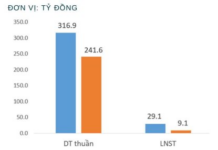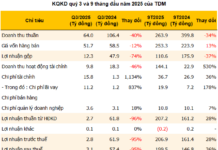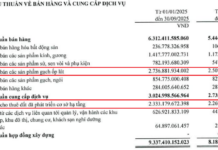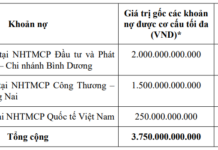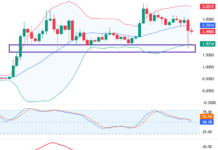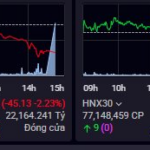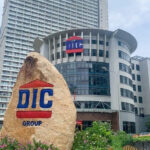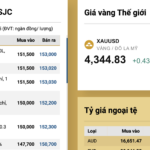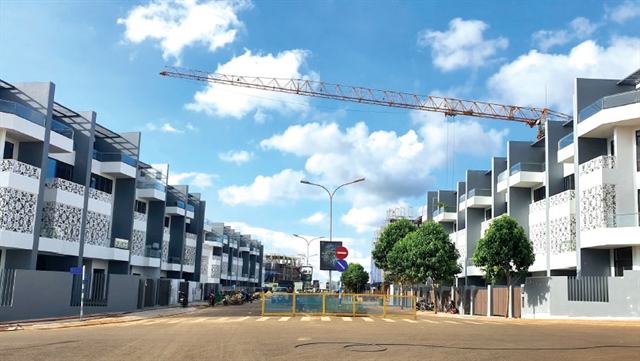
Real estate remains a symbol of success and a safe haven for private capital. Photo: N.K |
Over the past three decades, Vietnam has witnessed some of the most significant real estate price surges in Southeast Asia. Apartment prices in central Ho Chi Minh City and Hanoi are 20-30 times higher than the annual average income of a skilled worker (World Bank, 2023). This disparity is three times higher than in Thailand and nearly four times higher than in South Korea during comparable periods.
Paradoxically, while labor productivity has not kept pace with asset price increases, real estate remains a symbol of success and a safe haven for private capital. As a result, urban workers are largely excluded from homeownership, and the real estate market has become a hub for hoarding and speculation rather than a foundation for stable living and economic development.
This is not merely a market issue but a structural policy problem. Credit, tax, and planning tools are geared toward preserving asset values rather than promoting equitable access. Homeownership is shifting from a basic right to a privilege for a small group of asset accumulators.
In any developing economy, housing policy is a test of the state’s regulatory capacity. An efficient housing market not only ensures shelter for citizens but also reflects fairness, effective capital allocation, and confidence in the future.
Credit Policy: “Tight on Paper, Loose in Practice”
Since 2018, the State Bank of Vietnam (SBV) has repeatedly emphasized “tightening real estate credit.” However, the share of direct and indirect real estate-related credit remains high, accounting for 21-25% of total outstanding loans (Nguyen & Tran, 2024). Including consumer loans, corporate bonds, and mortgage collateral, the actual figure may exceed 30%.
|
The paradox lies in banks lending based on collateral rather than income-generating capacity. Buyers of second or third homes secure loans easily because they already own assets, while first-time homebuyers often fail to meet credit criteria. This policy reinforces a speculative cycle: as asset prices rise, borrowing capacity increases, and higher borrowing further drives up prices, mirroring China’s pre-2021 “assetized growth” model (PBOC, 2021). |
Commercial banks lend based on collateral rather than income-generating capacity. Buyers of second or third homes secure loans easily because they already own assets, while first-time homebuyers often fail to meet credit criteria. This policy reinforces a speculative cycle: as asset prices rise, borrowing capacity increases, and higher borrowing further drives up prices, mirroring China’s pre-2021 “assetized growth” model (PBOC, 2021).
Internationally, Vietnam is an outlier. In China, buyers of second homes must pay a minimum deposit of 60-70% and higher interest rates. South Korea bans mortgage lending for second homes in “speculative zones.” Singapore enforces strict Loan-to-Value (LTV) ratios, capping at 45% for second homes and 35% for third homes (Monetary Authority of Singapore, 2023).
In contrast, Vietnam lacks clear distinctions between “loans for living” and “loans for speculation.” Commercial banks are allowed to self-assess risk, often viewing land price increases as a safety net. This allows credit to flow into non-productive assets while small and medium-sized enterprises (SMEs), drivers of job creation and economic growth, face chronic capital shortages.
Tax Policy: The Largest Regulatory Gap
Vietnam currently lacks a true property tax. Its property tax rate is the lowest in Asia, at just 0.03% of GDP, compared to the regional average of 1.5-2% (World Bank, 2023). Non-agricultural land use taxes of 0.03-0.15% per year do little to curb speculation. Owners of multiple properties face no progressive taxation or penalties for leaving properties vacant or underutilized.
|
Social housing and long-term rental policies should be expanded through public-private partnerships. Public land funds should prioritize affordable housing projects rather than commercial auctions. |
Countries with similar starting points have implemented stronger tax policies. Singapore imposes a progressive property tax of 0-36% and a 20% Additional Buyer’s Stamp Duty (ABSD) on second homes, payable in cash (Monetary Authority of Singapore, 2023). South Korea taxes multiple property owners at 1-6% annually, especially in Seoul. China is piloting a 0.4-1.2% property tax in Shanghai, Chengdu, and Hangzhou (Chen, 2022).
Vietnam’s lack of such tools makes the market a haven for idle capital rather than an efficient investment channel. Consequently, land asset prices rise faster than labor productivity, widening the wealth gap.
Socio-Economic Consequences: Inequality and Systemic Risk
These policy shortcomings have profound socio-economic consequences, deepening inequality and increasing systemic risks:
Distorted capital allocation: Bank credit and household savings flow primarily into land, reducing investment in productive sectors (Le & Pham, 2023).
Rising social inequality: The gap between homeowners and renters widens, especially among urban youth. A Fulbright study (Nguyen & Tran, 2024) found that 70% of 25-35-year-olds in Hanoi and Ho Chi Minh City believe “buying a home is impossible.”
Financial instability risks: When house prices are artificially high, liquidity shocks can trigger widespread bad debt, similar to China’s 2021-2024 real estate crisis.
Erosion of social trust: Young people lose faith in fairness and legitimate wealth accumulation. Homeownership has shifted from a “dream of stability” to a “symbol of helplessness.”
Policy Recommendations
First, differentiate credit based on purpose. Preferential loans should be prioritized for “first homes,” “social housing,” or urban workers, while increasing risk weights and interest rates for second homes and beyond. In addition to LTV ratios, Debt-to-Income (DTI) limits should ensure borrowers can realistically repay debts, avoiding over-leveraging.
This approach has proven effective in South Korea, Singapore, and the UK, where housing loans are capped at 30-40% of household income. The SBV could limit credit growth by sector, allowing the central bank to control capital flows into high-risk areas like real estate, preventing asset bubbles.
The SBV could mandate higher Capital Adequacy Ratios (CAR) and lending rates for real estate loans, especially for second homes, forcing commercial banks to set aside larger risk provisions and reducing speculative lending. Adjusting interest rates and risk weights for real estate loans can serve as macroprudential tools. During market overheating, regulators can raise lending rates or risk weights to curb capital inflows into real estate.
Second, introduce an annual property tax and progressive taxation. A reasonable rate could be 0.3-0.5% of market value for first homes and 0.8-1.2% for second homes. This would generate stable budget revenue while curbing speculation. Increasing taxes on short-term real estate transactions (e.g., within 1-2 years) could reduce speculative flipping and encourage long-term holding, as seen in South Korea and Singapore.
Third, expand social housing and long-term rental policies through public-private partnerships. Public land funds should prioritize affordable housing projects rather than commercial auctions.
Fourth, enhance market transparency by publishing actual transaction prices, similar to South Korea’s Real Estate Board. Full information would limit price manipulation and speculative brokerage.
Fifth, in the long term, recognize homeownership as a citizen’s right, not just a commodity. This requires policy vision that transcends the short-term interests of banks and real estate developers.
Conclusion
House prices reflect not only physical supply and demand but also opportunity distribution policies. When credit and tax policies favor the asset-rich, the system becomes unjust, and real estate accumulates financial and trust risks.
A sustainable housing market must prioritize social efficiency over short-term profits. Reforming credit and property tax policies will reduce speculation and restore the link between economic growth and social equity—a prerequisite for inclusive and sustainable development.
Assoc. Prof. Truong Quang Thong (University of Economics Ho Chi Minh City, UEH)
– 07:00 17/10/2025
Vietnam’s Largest Auto Distributor Reports Q3 Profit Surging 59x Year-on-Year, Stock Hits Daily Limit Up
In the first nine months of the year, the company achieved a remarkable net revenue of 20,547 billion VND, marking a 27% increase compared to the same period in 2024. The parent company’s post-tax profit soared to 450 billion VND, an astounding 8.7-fold growth year-over-year.
Upcoming IPOs Set to Ignite the Market
In the first nine months of this year, only four companies listed or transferred to the HoSE. However, the final quarter has seen a surge in IPO and listing activity, with numerous businesses filing applications or announcing plans to move to the HoSE.












